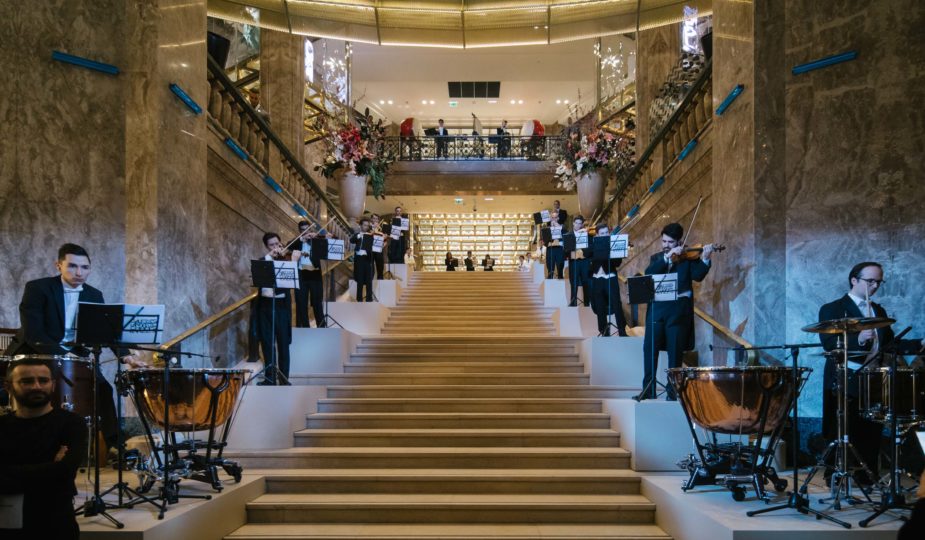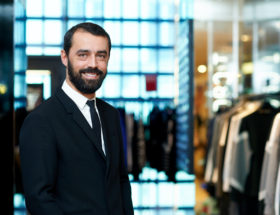How to define Experience when working in Retail?
Most people think we can describe experience by what a store, a website, a newsletter looks like. Brands keep investing huge amounts of their budget to open, renew or refurbish their store layouts to make their product stand out from competition or hoping visitors will accept to post a picture of it on Instagram. This aesthetic conception of experience seems accepted by all retailers, proof is that most client experience project often start with visuals – new website, new logo, new store concept- all this coupled with the adequate investment in marketing campaign to promote their identity. This brand image focus is so self-centered on the brand itself that it pushes the concept to equip staff in store with tablets or phone (yeah let’s go digital!) to invite clients to have the famous 360° view of how bright the new image shines.
An other common misconception of customer experience: Experience = service. Brands recruit, train and incentive their staff to give a friendlier or more personalized service. Final objective being the capture of data of their clientele. What’s the purpose of this? From a marketing perspective it should help the brand to better know their clients tastes and behaviours in order to design the perfect offer. Let’s be realistic, Fashion has never been about being reasonable and no executive will ever go to an artistic director asking for a specific shape of bag nor a dress color because that’s what client wants…
The disappointment sets in when all these investments produce little effects, either in enhanced customer satisfaction, improved foot traffic or sales. This is because they haven’t really designed a new customer experience at all. It like inventing a new meal from an old receipe.
Creating Desire
True customer experience design means deconstructing the entire customer journey into its smallest component parts and then reengineering each component to look, feel and most importantly, operate differently than before and distinctly from competitors. It means digging below the surface within each moment to understand the underlying customer need and designing the exact combination of people, place, product and process to deliver delight in that micro moment. As Bernard Arnault once said « who’s the boss? It’s not me, it’s the client! »
It means reconnecting with the company’s unique brand story, what originally made it exceptional, and weaving it into every customer interaction. It involves using different language, methods, rituals and processes than your competitors so that the resulting experience is tangibly foreign and fascinating compared to anything else they’ve been through. It’s ok, clients curiosity has been aroused and they will remember this interaction for sure.
It’s easy nowadays to purchase whatever you want without having to move from your sofa. In just a few click you can have your Dior delivered to your door the next day. AI sales advisors even trying to throw in additional products you don’t have to be polite to decline. What’s left for the brick and mortar retailer? Refunds, exchanges that some optimists will probably use as an opportunity to connect with new customers but realistically it will not help your conversion rate. I believe that experience can’t be purchased online.
Therefore we should keep in mind that Experience is the product. Clients will come to your store for the experience they will live, that they will enjoy, remember and tell their friends. Isn’t time the true luxury? The difference between a 1970’s Dom Perignon and a more recent one reside in the lenght you will taste it in mouth, the intensity. Same for shopping experiences – good or bad ones! – the impact on our cognitive system depends directly of the intensity of a moment.
The 5 elements of remarkable experiences
According to Doug Stephens (founder of Retail Prophet) a perfect experience should gather these essential elements:
1. Engaging: They connect to all five senses: of sight, sound, smell, taste and touch. They involve the customer in a visceral way. What we think about an experience may last hours. But memories of what we hear, feel, touch, see and taste may last a lifetime.
2. Unique. They incorporate methods, language or customs that are unusual, surprising or proprietary to the brand but are also authentic and natural. The incorporation of these unique elements lends the feeling that customers have not just entered a different store but a different world entirely.
3. Personalised. They make the customer feel that the experience was created just for them. This may be as simple as recalling details and preferences from an earlier visit or it may be as complex as creating a completely bespoke product or service design just for them. Either way, they feel special and valued.
4. Surprising. They incorporate elements or interactions that are completely unexpected. Packing even one small but delightful surprise into the experience leaves a lasting impression.
5. Repeatable. They are executed using prescriptive and tested methods to achieve a uniform level of consistency and excellence across the enterprise. They are so highly engineered and well practiced that they appear spontaneous while leaving almost nothing to chance. At the same time the experiential design affords staff just enough freedom to let their unique personalities shine through.
Courage not included
Achieving this level of customer experience is not easy but it’s also not something you can simply outsource to our agency. It requires significant organisational introspection, courage, honesty, design thinking and research. There is no off-the-shelf solution, no app and no magic to it – just the willingness to reinvent, reimagine and risk the occasional screw up. Think of it this way, if it’s not risky, it’s probably not innovative.


